The Economics and Statistics Division maintains archives of previous publications for accountability purposes, but makes no updates to keep these documents current with the latest data revisions from Statistics Canada. As a result, information in older documents may not be accurate. Please exercise caution when referring to older documents. For the latest information and historical data, please contact the individual listed to the right.
<--- Return to Archive
For additional information relating to this article, please contact:
February 24, 2022WAGES AND INFLATION BEFORE AND DURING THE PANDEMIC Rising wages may or may not be keeping pace with the prices of consumer goods and services in the economy. Comparing the change in wages with the pace of inflation can provide insight. Real wages are wages adjusted for inflation or similarly wages stated in terms of the amount of goods and services that can be purchased. When wages are rising faster than inflation, real wages and purchasing power will be increasing.
The real wage in the analysis is the average hourly wage for all employees reported in the Labour Force Survey adjusted for average 2019 prices based on the Consumer Price Index (CPI) in each province. The data does not include self-employed earnings. The data is presented as 12 month moving average to better identify trends and remove seasonal patterns.
The analysis does not cover standard of living or quality of life concepts for many reasons, including: the basket of goods and services in the consumer price index has changed over time, average wages may change due to job tenure or job-type preferences shifting, and tax and transfer changes.
Over the past 20 years, average real wages have trended upward in both Canada and Nova Scotia. Real wages in Canada consistently exceed Nova Scotia by a similar margin over this period of time. Nova Scotia’s average real wage was $20.40 per hour in 2002 and rose to $24.77 per hour in 2021. Nova Scotia, Manitoba, and Newfoundland and Labrador had declining real wages prior to the pandemic. Across all the provinces, the sharpest change in real wages occur with the beginning of the COVID-19 pandemic in 2020.
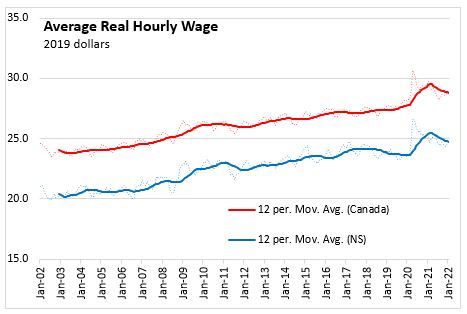
Within Atlantic Canada, average real wages have been similar in New Brunswick, Prince Edward Island and Nova Scotia. Newfoundland and Labrador was similar prior to 2008 before rising above the other Atlantic provinces.
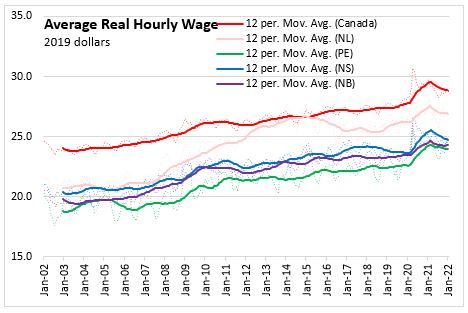
The relative difference between Ontario and Canada real wage has narrowed since the early 2000s.
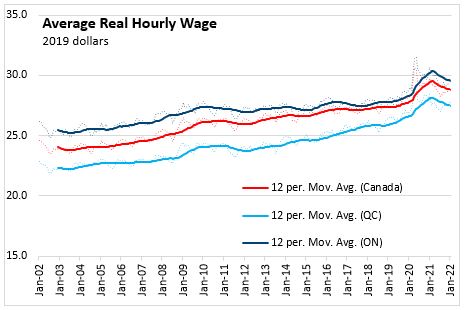
Saskatchewan and British Columbia have had similar real wages to the Canadian average. Alberta’s real wage grew faster than Canada over 2002-2013, before maintaining around a $4.00 difference prior to the pandemic.
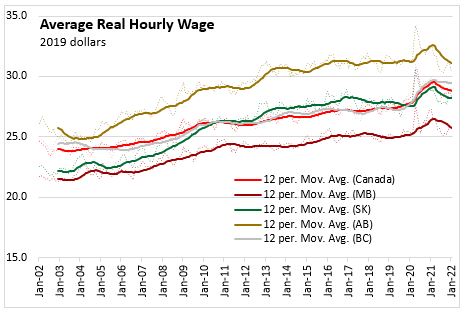
For the period 2002-2019, real wages in Nova Scotia grew 0.9% per year, similar to the Canadian average. Newfoundland and Labrador reported the fastest real wage growth while Ontario reported the slowest growth.
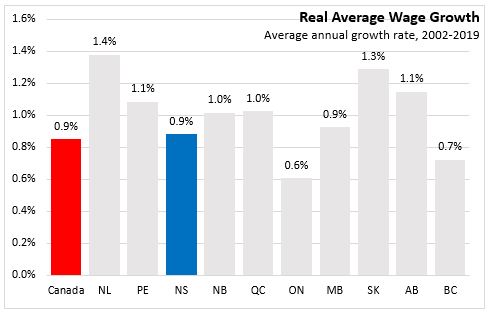
Over the past 20 years, periods of higher real wage growth are typically followed by period of lower real wage growth for both Nova Scotia and Canada. At the start of the COVID-19 pandemic, real wage growth rate increased quickly with a period of low inflation and the average wage artificially risen with certain sectors unable to operate. Real wage growth has been negative in Nova Scotia and Canada for most of 2021.

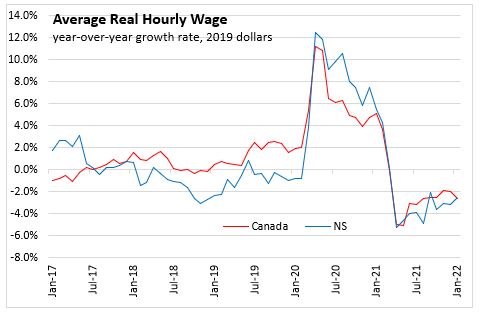
In 2020, Nova Scotia real wage growth was 7.0%, above the national average 5.7% increase. British Columbia and Nova Scotia (both +7.0%) reported the largest increase while Alberta (+3.7%) reported the smallest increase in 2020.
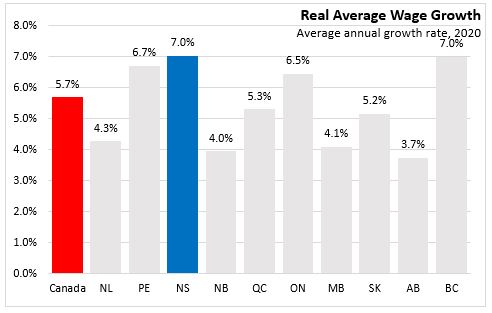
Real wages declined in all provinces in 2021. Nova Scotia’s real wage declined (-2.2%). Alberta (-3.8%) reported the largest decline and British Columbia (-0.3%) the smallest.
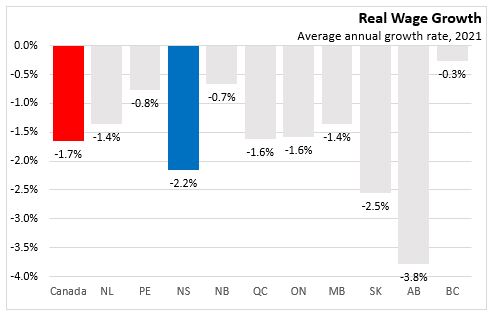
Over the two years since 2019, real wage growth has been positive in nine provinces. Nova Scotia's real wage grew 2.34% per year, above the national 1.95% per year rate. British Columbia (+3.31%/year) had the largest increase while Alberta (-0.1%/year) had the only decline.
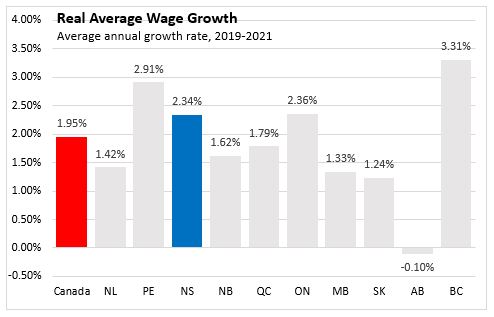
Source:
Statistics Canada. Table 14-10-0065-01 Employee wages by job permanency and union coverage, monthly, unadjusted for seasonality
Statistics Canada. Table 18-10-0004-01 Consumer Price Index, monthly, not seasonally adjusted
<--- Return to Archive